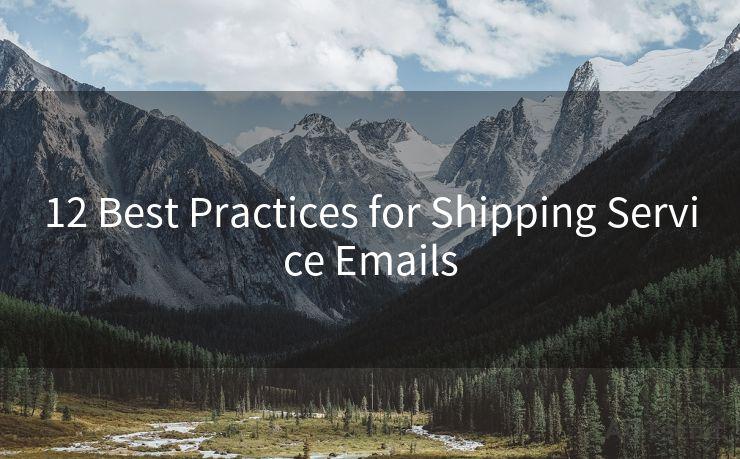12 Best Practices for Shipping Service Emails




In the era of digital communication, shipping service emails have become a crucial part of the customer experience. These emails not only inform customers about the status of their orders but also serve as a touchpoint for brands to enhance their relationship with customers. Here are 12 best practices to keep in mind when crafting shipping service emails.
1. Clear and Concise Subject Lines
The subject line is the first thing customers see, so it's essential to make it clear and to the point. Use action-oriented language that accurately reflects the email's content, such as "Your Order Has Been Shipped!"
2. Personalization
Personalize emails by addressing customers by their names and referencing their specific orders. This adds a personal touch and makes customers feel valued.
3. Order Details
Include all relevant order details, such as order number, products purchased, and quantities. This helps customers quickly identify the order and its contents.
4. Shipping Information
Provide clear shipping information, including the estimated delivery date, tracking number, and a link to track the shipment. This gives customers visibility and control over their orders.
5. Branding and Design
Maintain brand consistency in your emails by using your company's logo, colors, and font styles. A clean and professional design enhances readability and reinforces your brand identity.
6. Call to Action
Include a prominent call to action, such as "Track Your Order," to encourage customers to engage further with your brand.
7. Mobile Optimization
Ensure your emails are mobile-friendly, as many customers check their emails on mobile devices. Use responsive design techniques to optimize the email layout for different screen sizes.
8. Unsubscribe Option
Always provide an unsubscribe option to comply with email marketing regulations and respect customer preferences.
9. Contact Information
Include your company's contact information, such as customer service email and phone number, to facilitate easy communication if customers have any questions or concerns.
10. Privacy and Security
Remind customers about your privacy policies and the security measures you have in place to protect their personal information.
11. Testing and Optimization
Regularly test your emails for deliverability, readability, and click-through rates. Use A/B testing to optimize your email campaigns for better performance.
12. Follow-Up and Feedback
Consider sending a follow-up email after delivery to gather customer feedback. This helps improve your services and shows customers that you value their input.
By following these 12 best practices for shipping service emails, you can enhance customer satisfaction, build brand loyalty, and improve your overall customer communication strategy. Remember, every interaction with your brand is an opportunity to delight your customers and keep them coming back for more.

🔔🔔🔔
【AOTsend Email API】:AOTsend is a Managed Email Service for sending transactional emails. Support Email Types: reminders, authentication, confirmations, notifications, verification codes, invoices, password resets, account activations, billing statements, two-factor authentication (2FA), and one-time passwords (OTP) emails, etc. $0.28 per 1000 Emails. 99% Delivery, 98% Inbox Rate.
You might be interested in:
Why did we start the AOTsend project, Brand Story?
What is a Managed Email API, How it Works?
Best 25+ Email Marketing Platforms (Authority,Keywords&Traffic Comparison)
Best 24+ Email Marketing Service (Price, Pros&Cons Comparison)
Email APIs vs SMTP: How they Works, Any Difference?




Scan the QR code to access on your mobile device.
Copyright notice: This article is published by AotSend. Reproduction requires attribution.
Article Link:https://www.mailwot.com/p3727.html



